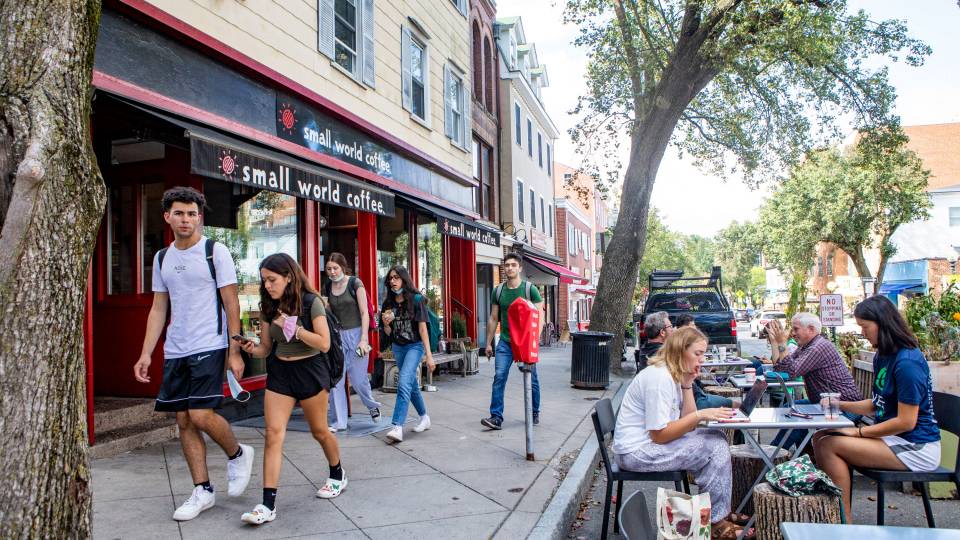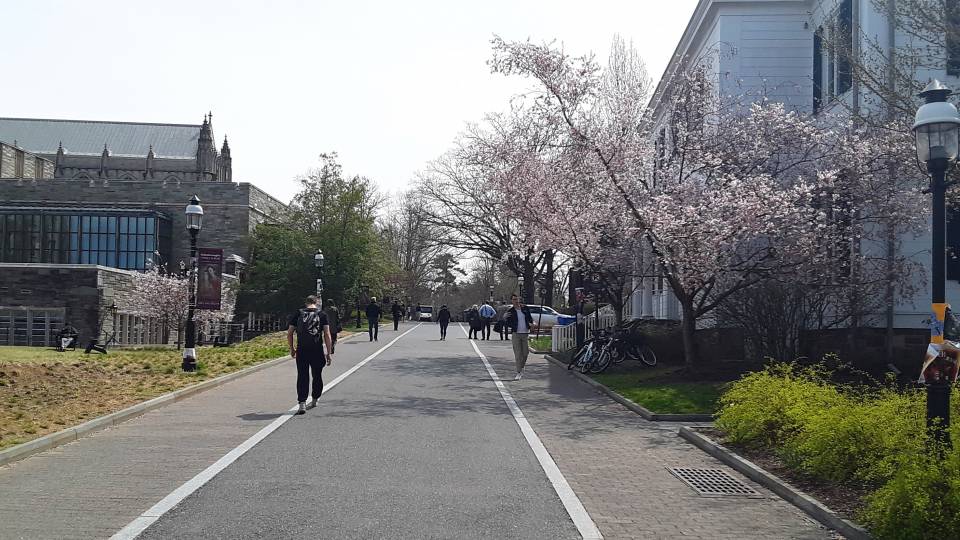Princeton University is a major economic force in the region and state, boosting the New Jersey economy by more than $1 billion through construction activity, purchases of goods and services, taxes, visitor and student spending, and other financial contributions.
The economic value of Princeton University to its neighboring communities, Mercer County and the state of New Jersey is detailed in a new report, "Education and Innovation, Enterprise and Engagement: The Impact of Princeton University." It is the first time the University commissioned a comprehensive study to assess its direct and indirect financial impacts across the state.
"As we continue to explore ways in which the University can contribute even more to the economic vitality of the community, county and state, we felt it was important to have a thorough understanding of the role the University already plays," said Robert Durkee, the University's vice president and secretary. "Princeton not only enriches the intellectual, cultural and civic life of the area, but it is also a stable source of jobs, expenditures and other economic activity."
The study, conducted by the New York-based independent consulting firm Appleseed, evaluated the University's overall financial impact in the fiscal year ending June 30, 2007. During that time, Princeton directly and indirectly accounted for $833 million in economic activity and 8,951 full-time jobs in Mercer County, and $1.09 billion in economic activity and 10,655 full-time jobs in New Jersey.
Even in difficult financial times, the report noted that the University is a steady fixture in the regional economy. It is one of central New Jersey's largest private employers, and its work force tends to be constant, or even grow, as new academic initiatives are undertaken. Employee payroll in fiscal year 2007 was approximately $358 million, with an additional $113 million spent on employee benefits. Fifty-one percent of the payroll went to employees living in the Princeton area, while 21 percent went to residents from other parts of Mercer County.
The study found that, despite the University's tax exempt status, Princeton's operations generate millions of dollars in tax revenue for state and local governments. The state received $14 million in state income taxes from Princeton employees' wages and salaries in 2007, as well as $1.35 million from University energy taxes and fees. University spending also indirectly generated another $21 million in state tax payments by its employees, suppliers, contractors and their employees.
At the local level, in 2007 the University paid property taxes and user service fees totaling nearly $10.2 million to municipalities and school districts in the Princeton area and to Mercer County, including taxes on graduate student housing that qualify for tax exemption under state law. The University also contributed more than $1 million in voluntary payments to several local government entities. The report finds that these payments to local governments and school districts compare favorably to other colleges and universities, and that these payments equal or exceed the cost of municipal services provided to the University.
Businesses across the region significantly benefit from University spending on goods, services and capital construction projects. Princeton spent $82 million in 2007 for non-construction goods and services from New Jersey vendors, with more than a third of the money going to Princeton area businesses. During the same time, payments to New Jersey contractors working on University capital construction and major maintenance projects totaled $100 million, with more than $17 million going to construction firms in the Princeton area, and $10 million to other Mercer County contractors.
As contributors to a leading research institution, University faculty and staff started a number of new companies in the past five years. As stated in the report:
"The University's strengths in critical areas of research ensure that it will continue to be involved at the forefront of developing the ideas and innovations that will drive economic growth during the next several decades in fields as diverse as genomics, neuroscience, new materials, and new energy and environmental technologies."
As a hub for academic, cultural and athletic activities, the University accounts for millions of dollars in consumer spending at Princeton-area businesses. Off-campus spending by University students in fiscal year 2007 totaled nearly $34 million, while the more than 718,000 visitors to the University during the 2006-07 academic year spent nearly $37 million.
Hotels, in particular, may attribute steady business to University-related clients. Local municipalities benefit from the hotel occupancy taxes generated by guests visiting the University.
In addition to contributing to the area's economic health, Princeton positively affects the region in many other ways, the report noted. The University offers community educational and tutoring programs, serves as a cultural and recreational resource with venues such as the Princeton University Art Museum and events like the youth basketball league, and helps to support community programs such as Princeton Community Housing and the "Free B" jitney service around Princeton Borough.
"… The educational and cultural resources and activities that Princeton makes available to the community will continue to make Princeton an attractive place to live, work and do business; and this in turn helps make not just the University, but the entire community, a magnet for talent," the report concluded.
The findings in Appleseed's report follow Princeton's participation in a 2007 study examining the positive economic impact of the five Mercer County higher education institutions: the College of New Jersey, Mercer County Community College, Princeton University, Rider University and Thomas Edison State College.
Appleseed, the firm that prepared the report, has conducted similar analyses for Brown University, the Massachusetts Institute of Technology and other universities.
The report was commissioned by the University's offices of community and regional affairs and public affairs. Kristin Appelget, the University's director of community and regional affairs, said that "while the data collection and analyses in the report are extensive, there are economic impacts that are not included, such as the positive impact of the stabilizing presence of the University on the favorable bond ratings for Princeton Township and Princeton Borough.
The township has a bond rating of AAA, while the borough has a bond rating of AA, allowing the municipalities to borrow at lower interest rates than would otherwise be available to them.
"The report helps to quantify the University's economic impact, even as it also discusses other respects in which the University adds to the vitality and quality of life of the community," Durkee said. "Through the people it employs, the purchases it makes, the visitors it attracts, the ideas it generates and the programs it offers, the University helps to provide a strong and stable economic foundation for the Princeton area, Mercer County and the state."
A copy of "Education and Innovation, Enterprise and Engagement" is available online.



